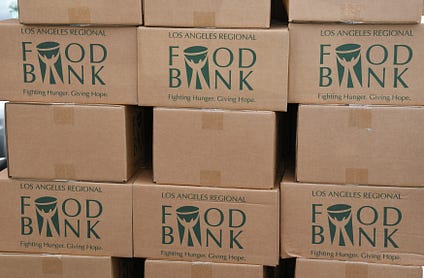Bridging Funding Gaps – The Rising Nepal

Report on Adaptive Social Protection and Sustainable Development Goals
Introduction: Climate Resilience and Social Protection Systems
The increasing frequency and intensity of natural hazards, exacerbated by climate change, present significant challenges to social protection systems, particularly in low- and middle-income nations. In response, governments are developing Adaptive Social Protection (ASP) systems to protect poor and vulnerable populations from shocks. The efficacy of these systems is contingent upon robust and scalable funding mechanisms. This report examines the financing of ASP systems through the lens of the Sustainable Development Goals (SDGs), focusing on SDG 1 (No Poverty), SDG 10 (Reduced Inequalities), and SDG 13 (Climate Action).
Challenges in Funding Social Protection During Crises
During crises, governments must rapidly scale up social protection budgets. However, securing these additional funds presents considerable difficulties. Traditional approaches to addressing budgetary shortfalls often carry risks that can undermine long-term sustainable development.
- Contingency Funds: While government reserve funds can act as a savings mechanism, they are often insufficient for rare but severe disasters.
- Budget Reallocation: Diverting funds from other essential development projects can compromise progress on other SDGs.
- Borrowing and Debt: Heavy borrowing can lead to fiscal instability and increased debt burdens, hindering a nation’s capacity to invest in sustainable development infrastructure.
- Ad Hoc Humanitarian Aid: Reliance on international donors can create dependency and may not provide timely or predictable support, impacting the ability to achieve SDG 17 (Partnerships for the Goals) on equitable terms.
The Role of Pre-Arranged Financing in Achieving the SDGs
Pre-arranged financing instruments offer a proactive solution for scaling up shock-responsive social protection. These tools are critical for building resilience and making tangible progress towards several SDGs.
Climate Risk Insurance as a Key Instrument
Climate risk insurance is an increasingly utilized tool where governments pay premiums to receive pre-agreed payouts when a disaster strikes. This mechanism directly supports several development goals:
- SDG 2 (Zero Hunger): As demonstrated by the 2024 payout of $16.8 million to Zimbabwe from the African Risk Capacity (ARC) Group following a drought-induced agricultural failure, insurance can provide critical funds for food security.
- SDG 1 (No Poverty): By providing timely financial support, insurance helps prevent vulnerable households from falling into poverty due to climate-related shocks.
- SDG 17 (Partnerships for the Goals): The model involves collaboration between governments, regional bodies like the ARC Group, and international organizations such as the UN Development Programme (UNDP), which provides guidance on integrating risk finance into development projects.
Despite its benefits, the high cost of premiums and the dependency on effective delivery systems for payouts remain significant caveats.
Payout and Delivery System Effectiveness
The design of payout mechanisms is critical for ensuring that funds reach those most in need quickly and reliably, a core tenet of SDG 10 (Reduced Inequalities). The efficiency of these systems determines the ultimate impact of the financial instrument.
- Direct Payouts: The beneficiary receives funds directly from the insurance provider.
- Indirect Payouts: Funds are transferred to an intermediary, such as a government agency or mobile banking provider, which then handles distribution.
The ideal approach involves “piggybacking” on existing government-run social protection programs to leverage established infrastructure for rapid assistance delivery. However, seamless implementation remains a practical challenge.
Conclusion: Aligning Financial Instruments with Long-Term Resilience
Climate risk insurance is part of a broader suite of pre-arranged disaster financing tools available to governments, which also includes emergency response funds, sovereign contingency loans, and catastrophe bonds. These instruments are vital for channeling funds into adaptive social protection systems. The crucial challenge moving forward is to ensure these mechanisms not only fill short-term fiscal gaps but also contribute to sustainable poverty reduction and build long-term community resilience, thereby advancing the comprehensive agenda of SDG 1 (No Poverty), SDG 11 (Sustainable Cities and Communities), and SDG 13 (Climate Action).
Analysis of Sustainable Development Goals (SDGs) in the Article
1. Which SDGs are addressed or connected to the issues highlighted in the article?
- SDG 1: No Poverty
- SDG 2: Zero Hunger
- SDG 10: Reduced Inequalities
- SDG 13: Climate Action
- SDG 17: Partnerships for the Goals
2. What specific targets under those SDGs can be identified based on the article’s content?
-
SDG 1: No Poverty
- Target 1.3: Implement nationally appropriate social protection systems and measures for all, including floors, and by 2030 achieve substantial coverage of the poor and the vulnerable.
Explanation: The article’s core subject is “adaptive social protection (ASP) systems” designed to “cushion poor and vulnerable groups against shocks.” It discusses the need to scale up these systems and budgets during crises, directly aligning with the implementation and expansion of social protection. - Target 1.5: By 2030, build the resilience of the poor and those in vulnerable situations and reduce their exposure and vulnerability to climate-related extreme events and other economic, social and environmental shocks and disasters.
Explanation: The article focuses on mechanisms like climate risk insurance and pre-arranged financing to help governments and vulnerable populations cope with “natural hazards and climate risks.” The ultimate goal mentioned is to drive “sustainable poverty reduction and resilience.”
- Target 1.3: Implement nationally appropriate social protection systems and measures for all, including floors, and by 2030 achieve substantial coverage of the poor and the vulnerable.
-
SDG 2: Zero Hunger
- Target 2.1: By 2030, end hunger and ensure access by all people, in particular the poor and people in vulnerable situations, to safe, nutritious and sufficient food all year round.
Explanation: The article provides a specific example of Zimbabwe receiving an insurance payout after a “failed agricultural season and severe food insecurity following drought.” It also mentions that social protection systems can fund “food assistance,” directly addressing the goal of ensuring access to food during crises.
- Target 2.1: By 2030, end hunger and ensure access by all people, in particular the poor and people in vulnerable situations, to safe, nutritious and sufficient food all year round.
-
SDG 10: Reduced Inequalities
- Target 10.4: Adopt policies, especially fiscal, wage and social protection policies, and progressively achieve greater equality.
Explanation: The article is centered on social protection policies specifically targeted at the “poor and vulnerable groups.” By discussing how to fund and deliver relief to these specific populations, it addresses the use of fiscal and social policies to mitigate the unequal impacts of disasters.
- Target 10.4: Adopt policies, especially fiscal, wage and social protection policies, and progressively achieve greater equality.
-
SDG 13: Climate Action
- Target 13.1: Strengthen resilience and adaptive capacity to climate-related hazards and natural disasters in all countries.
Explanation: The entire concept of “adaptive social protection (ASP)” is a strategy to enhance adaptive capacity. The article explicitly links the need for these systems to the “increase in intensity and frequency” of “natural hazards and climate risks” and discusses tools like “climate risk insurance” as a direct response to strengthen resilience.
- Target 13.1: Strengthen resilience and adaptive capacity to climate-related hazards and natural disasters in all countries.
-
SDG 17: Partnerships for the Goals
- Target 17.3: Mobilize additional financial resources for developing countries from multiple sources.
Explanation: The article details various financial mechanisms beyond domestic budgets, including “ad hoc humanitarian aid from international partners,” payouts from regional insurance providers like the “African Risk Capacity (ARC) Group,” “sovereign contingency loans,” and “catastrophe bonds,” all of which represent mobilized financial resources from multiple sources.
- Target 17.3: Mobilize additional financial resources for developing countries from multiple sources.
3. Are there any indicators mentioned or implied in the article that can be used to measure progress towards the identified targets?
-
SDG 1: No Poverty
- Indicator for Target 1.3 (Implied): Proportion of population covered by social protection systems. The article discusses scaling up “social protection budgets” and leveraging “existing social protection programmes,” implying that the reach and funding of these systems are key metrics.
- Indicator for Target 1.5 (Implied): Amount of pre-arranged financing and insurance payouts for disaster response. The article provides a concrete example: the “$ 16.8 million payout” to Zimbabwe. This monetary value serves as a direct indicator of financial resources mobilized to build resilience against shocks.
-
SDG 2: Zero Hunger
- Indicator for Target 2.1 (Implied): Prevalence of food insecurity. The article mentions “severe food insecurity” as a trigger for the insurance payout. Measuring the level of food insecurity before and after the intervention (e.g., cash transfers, food assistance) would be a way to track progress.
-
SDG 13: Climate Action
- Indicator for Target 13.1 (Implied): Number of countries implementing national disaster risk reduction strategies. The adoption of “adaptive social protection (ASP) systems” and the use of financial instruments like “climate risk insurance” and “catastrophe bonds” as described in the article are components of such strategies.
-
SDG 17: Partnerships for the Goals
- Indicator for Target 17.3 (Implied): Volume of financial resources mobilized for developing countries. The article mentions several financial flows that can be quantified, such as humanitarian aid, insurance premiums and payouts (e.g., $16.8 million), and the value of contingency loans and catastrophe bonds.
4. Table of SDGs, Targets, and Indicators
| SDGs, Targets and Indicators | ||
|---|---|---|
| SDG | Target | Indicator (Mentioned or Implied) |
| SDG 1: No Poverty | 1.3: Implement nationally appropriate social protection systems. | The scale and budget of social protection programmes. |
| 1.5: Build the resilience of the poor to climate-related shocks. | Value of pre-arranged financing and insurance payouts (e.g., “$ 16.8 million payout”). | |
| SDG 2: Zero Hunger | 2.1: End hunger and ensure access to food during crises. | Prevalence of “severe food insecurity” as a trigger for assistance. |
| SDG 10: Reduced Inequalities | 10.4: Adopt social protection policies to achieve greater equality. | Implementation of social protection systems targeted at “poor and vulnerable groups.” |
| SDG 13: Climate Action | 13.1: Strengthen resilience and adaptive capacity to climate-related hazards. | Adoption of adaptive social protection (ASP) systems and climate risk insurance. |
| SDG 17: Partnerships for the Goals | 17.3: Mobilize additional financial resources for developing countries. | Volume of funds from international partners, regional insurance providers (ARC Group), and catastrophe bonds. |
Source: risingnepaldaily.com

What is Your Reaction?
 Like
0
Like
0
 Dislike
0
Dislike
0
 Love
0
Love
0
 Funny
0
Funny
0
 Angry
0
Angry
0
 Sad
0
Sad
0
 Wow
0
Wow
0
















































:focal(1500,1000)/https://media.globalcitizen.org/a6/9a/a69a4720-d8a1-4715-b596-18738d03c05c/rotary_polio_hero_image.jpg?#)







/countries/sri-lanka/photo-credit---dmc-sri-lanka.tmb-1200v.jpg?sfvrsn=dc298bcc_1#)

















